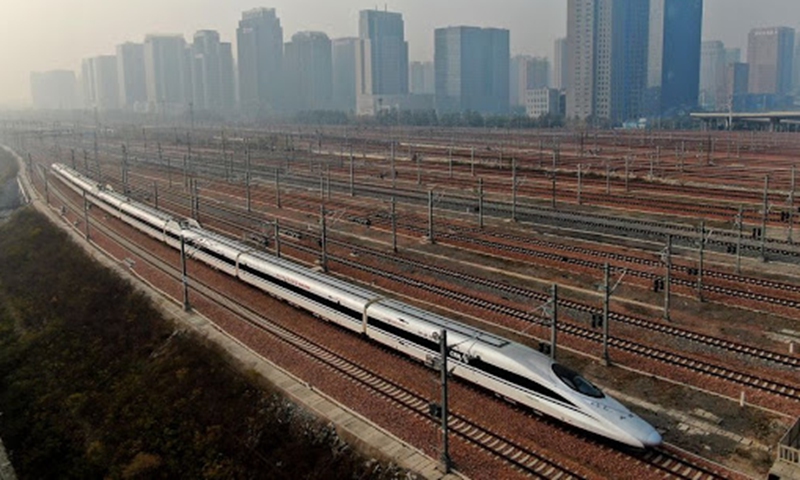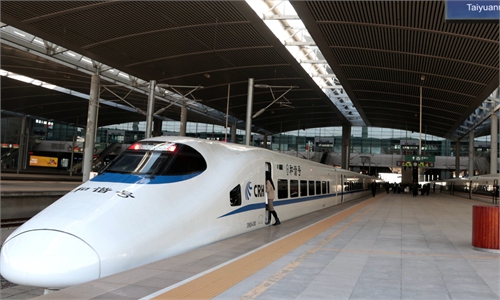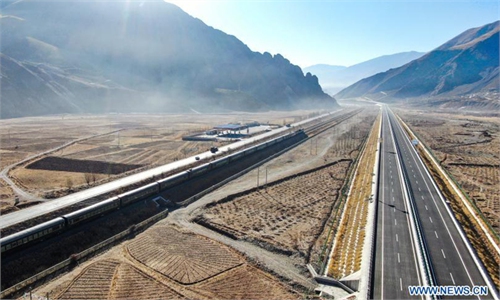China sees more than 40% increase of investment in fixed assets in transportation in January

File photo: Xinhua
China saw a robust investment in fixed assets in transportation in January this year, official data showed on Friday, showing an upward construction trend amid the background of the country's economy recovery.
In January, there was 191.2 billion yuan ($29.56 billion) of investment in fixed assets in transportation, a year-on-year increase of 42.1 percent and increase of 13.8 percent compared to January 2019, Ministry of Transport said.
Specifically, completed investment in highways and waterways was 143.4 billion yuan, a year-on-year increase of 52.3 percent and up 11.8 percent compared to January 2019.
Last year, under pressure from the COVID-19 epidemic, national fixed asset investments in highways and waterways reached 2.59 trillion yuan, up 43.8 percent year-on-year, which was 143.8 percent of the planned annual investment.
The construction of major transportation infrastructure has played an important role as a "ballast stone," setting the stage for the resumption of work and production, Sun Wenjian, spokesperson of the ministry said at the conference.
Sun said the key projects coming this year include a 6-meter water-deep waterway from Wuhan in Central China's Hubei Province to Anqing in East China's Anhui Province on the Yangtze River trunk line, the Shenzhen-Zhongshan bridge, and the Guangzhou-Zhanjiang high-speed railway in the Guangdong-Hong Kong-Macao Greater Bay Area.
There are also projects including the third-phase expansion project of Guiyang airport in Southwest China's Guizhou Province, and the Urumqi-Yuli expressway in Xinjiang Uygur Autonomous Region.
The projects are also in line with the blueprint released by the government on China's comprehensive transportation network layout, as the country aims to build 200,000 kilometers of railways, 460,000 kilometers of highways, and 25,000 kilometers of high-level sea lanes by 2035.
"Railway infrastructure is a large investment that connects many industries, including real estate and manufacturing. It is estimated that the cost of running a 160-kilometer per hour high-speed train, including the cost of railway construction, is about 50 to 100 million yuan per kilometer. The pull of day-to-day revenues and spending on the economy is huge," an engineer surnamed Kong at China Railway Urumqi Group, told the Global Times on Friday.
From the perspective of China's economic development, and compared to the history of developed cities in the US and Japan, some Chinese cities have gradually become metropolitans. Considering the current state of technology, transportation between the central city and the satellite city will have to rely on rail, which is cheap, fast and has large capacity, according to Kong.
He added that in the future, there may be megacities of 100 million people in China. In fact, the Pearl River Delta in Guangdong is already on the horizon.
The total transportation network will hit 700,000 kilometers by 2035, according to the plan, with 27 major coastal ports, 400 civil transportation airports and 80 express hubs.
China's ports recorded a robust growth of cargo throughput in January amid the country's steady economic recovery, data from the Ministry of Transport showed.
Cargo throughput at ports climbed 17.4 percent year-on-year to 1.29 billion tons in January, the ministry said.
In January, container handling volume at China's ports amounted to 23.77 million twenty-foot equivalent units, up 13.2 percent from a year ago.


